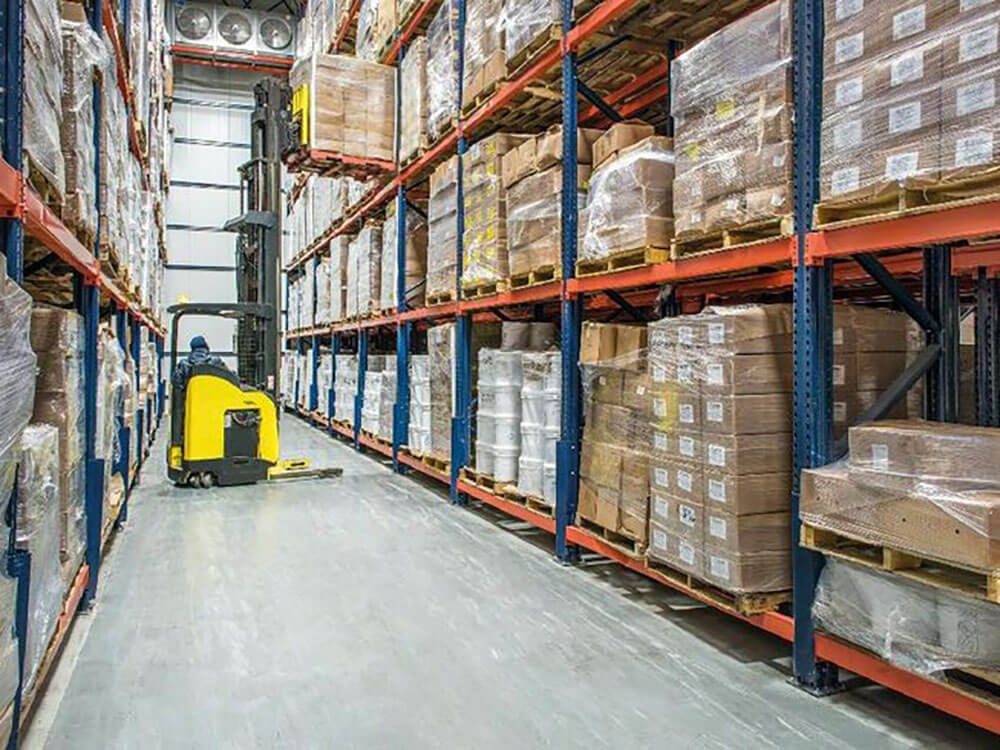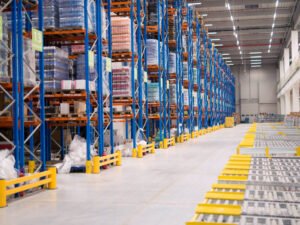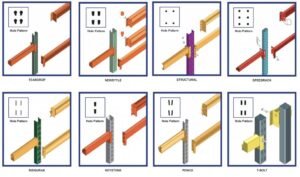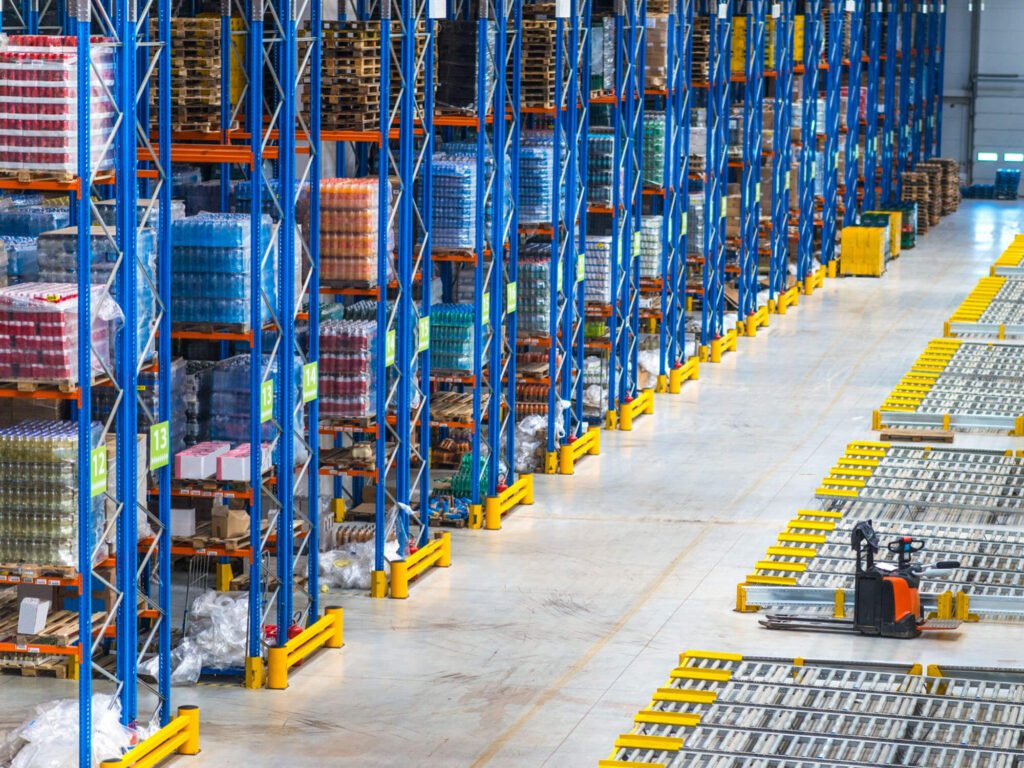Cold storage design might sound like a big challenge to topple. But really, it’s all about keeping your commodities, such as fruits, veggies, and other perishables in tip-top shape. You want to prevent them from getting all mushy, ward off any unwanted bacteria, and make sure they stay as fresh as possible.
So, when you’re planning this chilly haven, you should keep in mind a few things: what its ideal size is, how cold and humid it should be, how to remove excess heat, how to have good insulation, and, of course, how to be energy-efficient. All the answers depend on your unique storage demands.
If you’re new to cold storage design, then this article is for you. Here, you will find everything there is to know about a cold storage warehouse, including what role it plays in your inventory and how to build a functional and efficient one for your facility.
Cold Storage 101: Understanding The Facility
Cold storage is a storage facility that houses perishable or other sensitive commodities, such as food and medicines, within a controlled temperature range to preserve their integrity and shelf life.
Low temperatures are what set cold storage apart from other inventory methods. Think of it as a guardian for your perishable inventories. Cooling them down is like hitting the slow-motion button on the changes that can make them go bad.
The eventual purpose of a cold storage warehouse is to ensure these items can be transported to consumers without compromising on quality.
Cold Storage Applications
Cold storage is necessary for any product or commodity that is quickly degraded or loses integrity when exposed to changes. Foods and medicines are the most typical examples. Additionally, the following goods also need cold storage:
- Cosmetics (like cologne and lipstick).
- Nutritional supplements.
- Artworks and paintings.
- Books.
- Botanicals (like plants and flowers).
- Craft products (like candles).
- Organic textiles (like wool and fur).
- Specialized items like aircraft elements.
From the list above, it’s safe to say that cold storage is indispensable for the following industries:
- Food outlets, restaurants, and supermarkets.
- Frozen food producers.
- Pharmaceuticals and hospitals.
Cold Storage’s Components
In order to build an efficient cold storage system, it’s important that you are familiar with the structure’s components. Below are the main elements that make up a typical cold storage warehouse:
The Coolant
Also known as refrigerant, coolant is a type of gas that circulates through the system via a network of tubes and pipelines. It is similar to how blood flows through arteries and veins in the body.
The two most typical coolants that many facility operators choose are ammonia and freon gas. While ammonia is affordable and effective for cold storage, the substance is potentially hazardous and combustible. Freon gas, on the other hand, is low in toxicity and non-flammable.
The Compressor
If the coolant represents blood in the body, then the compressor functions similarly to the heart, as this primary component helps facilitate the circulation of coolant through the cold storage facility.
The compressor’s core mission is to compress the coolant in order to increase its temperature and pressure, after which it pumps the heated substance into the condenser.
The Condenser
The cold room condenser is a major heat exchange component in the cold storage facility, with the purpose of cooling and condensing the high-temperature coolant from the compressor into a high-pressure liquid.
This element utilizes pipelines, blowers, and water spray to remove the heat from the coolant and disperse it into the air. Typically, this unit comprises a cylindrical shell (either vertical or horizontal) rolled and welded by a steel plate.
The Receiver
What the receiver does is store the liquid coolant it gets from the condenser. By doing so, the receiver facilitates pressure maintenance throughout the entire system and serves as a buffer to accommodate increased loads, like when more cool air is required.
The receiver can also discharge the coolant into an expansion valve when needed. This valve plays a crucial role in regulating the temperature, pressure, and quantity of coolant released into the subsequent component, the separator.
The Separator
The separator collects and accumulates the coolant from the receiver. Then, the coolant will be delivered to another expansion valve via pumps outside the separator. Before entering the evaporator, the flow rate is adjusted.
The pumps that help carry the coolant also help modify the load imposed on the evaporator, which is subject to the warehouse’s cooling demands.
The Evaporator
This component is the final element that completes the cold storage warehousing process. The evaporator delivers the coolant into the storage area via a set of tubes, while a blower blasts air from the area across them, bringing about a temperature drop.
By absorbing the heat in the tubes, the coolant exits the evaporator cold, thus cooling the chamber and the items stored therein. Once the coolant has completed its cooling function in the evaporator, it will return to the initial component, the compressor, and the entire cooling process will begin again.
Different Types Of Cold Storage
Cold storage facilities can be categorized into various types depending on the selected criteria. In the following part, let’s explore two common ways professionals use to classify cold storage.
Based On The Temperatures
The most common way to categorize cold storage warehouses is based on the required temperatures therein. With this criteria, you will have two main types: refrigerated cold storage and frozen cold storage.
Refrigerated cold storage warehouses are used to maintain the quality and longevity of non-frozen commodities. In most cases, the temperature therein is kept between 0 and 10 degrees Celsius, which is an ideal range for storing fruits and vegetables.
On the other hand, frozen cold storage structures aid in the safe preservation of products that must be frozen. Temperatures are typically controlled between -30 and 0 degrees Celsius in these facilities, ensuring that no damage or change happens to the goods’ integrity.
Based On The Ownership
When classifying cold storage facilities based on their ownership, you will have the following two types: private cold storage and shared cold storage.
As the name suggests, private cold storage warehouses are characterized by the ownership of an individual company that utilizes or produces the commodities stored within. The goods are often kept there until it is time to deliver them to retailers or directly to end users.
In contrast, shared cold storage facilities are commonly under the ownership and management of 3PL (third-party logistics) companies. They receive, store, and distribute goods on behalf of other businesses.
Between these two types, shared cold storage is more popular as it provides companies with hassle-free experiences. The cost of setting up and maintaining a private cold storage warehouse is high. Not to mention, private cold storage facilities require meticulous engineering and design efforts to comply with a multitude of regulations.
Important Tactics To Consider In Your Cold Storage Design
The objective of cold storage design extends beyond merely facilitating the efficient handling of perishable products. A well-designed cold storage warehouse can provide additional benefits, one of which is productivity optimization.
Therefore, here are a few crucial considerations you should take into account when developing the design for your cold storage:
#1: The Cold Storage Facility’s Total Area
The overall square footage is an important metric in cold storage design as it can impact the structure’s efficiency, functionality, and expense. In simple terms, the cold storage’s total measurements serve as direct indicators of your warehouse’s capacity.
So, when mapping out your cold storage, it is imperative to consider the following areas:
Storage Capacity
Before anything else, you should consider your desired capacity or the warehouse space required for storage. This figure is determined by multiplying the total weight of the stored products by the amount of storage space needed for each unit.
In addition, please pay close attention to other determinants, such as the packaging, density, and layering arrangement of the stored items. These extra factors can influence your storage capacity.
Areas For Handling And Processing Goods
These areas are indispensable to all warehouses, let alone cold storage facilities. Thus, during the design process, always account for the necessary space for handling and processing products.
By designating specific areas for goods loading, sorting, unloading, packaging, labeling, and operational space for machinery and staff, it will help boost your warehouse productivity and determine more accurate measurements available for cold storage.
Cold Storage Chambers
The overall space you need for your cold storage construction will be impacted by various factors, including the number of cold storage chambers or rooms you want to build, their dimensions, and the required temperatures in them.
These options are contingent on the goods you’re storing.
Office Areas
Administrative space is also required in your cold storage facility to manage its overall operation.
The desired amount of space for these areas tends to be directly proportionate to your facility size and the staff headcount needed to keep your everyday operation running smoothly.
Loading Docks And Parking Spaces
In addition to the office areas, you also need to consider the number and size of the vehicles operating (receiving and dispatching goods) in the warehouse in order to set up spaces for the loading dock spaces.
Additionally, there should be enough parking to accommodate both your staff and all of the necessary vehicles that your business owns. This consideration also contributes to the company’s smooth workflow.
Utility Room
Another important consideration when it comes to determining your cold storage’s total area is the space for its utility room. Make sure to plan out its measurements and location in the overall facility layout.
Typically, a utility room includes essential backup generators, plumbing and electrical elements. These items are crucial to the continuous operation of your cold storage warehouse.
Equipment Areas
Besides those tools above, other gear and equipment such as main generators, compressors, and forklifts also require space.
That’s why it is important to save some areas for these apparatuses as well, not only for their running but also for their rest after the working day is over.
Insulation
Without insulation to monitor humidity and prevent heat transfer, cold storage warehouses are useless. When determining the overall size of your cold storage facility, make sure to consider the thickness and placement of polyurethane insulation panels, since they are constructed directly into the walls, ceilings, and floors.
Normally, the thickness of insulation panels ranges from 80mm to 200mm and is contingent upon your budget and cooling requirements. While typical cold rooms with temperatures above 0 degrees Celsius need 80 mm of thickness, refrigeration systems with sub-zero temperatures require insulation panels with 100mm or more of thickness.
#2: The Cold Storage Type
Next, the overarching design of cold storage facilities must take their intended function into consideration. As introduced above, there are a wide array of cold storage types out there to meet your diverse temperature needs.
Thus, it’s essential to think about the following factors:
- It may be necessary to pre-cool certain commodities, like newly harvested fruits, before transferring them to a cold storage room. The ideal temperature range here is between 0 and 8 degrees Celsius.
- Products that don’t need to be frozen should be housed in cold rooms with a temperature of at least 8 degrees Celsius. This group includes beverages, produce, milk, and other dairy products. The low temperature helps prevent bacterial formation and preserve the goods’ freshness.
- Besides the products mentioned above, some items, such as seafood, meat, and poultry, often need cold rooms with a temperature range of -1 to 8 degrees Celsius. In these cases, energy stability is of utmost importance due to the storage’s potential lengthy duration.
- When it comes to frozen commodities, the ideal temperature range is between -18 and -24 degrees Celsius. Oftentimes, freezers are needed to maintain this low temperature. Some common items that require this type of cold storage system include ready-to-eat meals, fish, meat, and even frozen vegetables.
- A handful of perishable items, such as specific fresh fruits and seafood, must be stored in blast-freezing chambers with a temperature range of -35 to -45 degrees Celsius to maintain for long-term storage.
#3: The Floor Plan Design
During the cold storage design process, it is crucial not to overlook the floor layout. You should consider the number and size of cold rooms needed to accommodate various goods.
Industry experts believe that cold storage facilities should not include a single huge room but rather many smaller ones. This is particularly important when it comes to preserving food since different fruits and vegetables demand different ideal temperatures and humidity levels for different storage durations.
For example, tomatoes thrive in conditions of 85–90% humidity and 13–18 degrees Celsius; potatoes need a humidity level of 95–98% and temperatures of 5–10 degrees Celsius.
Moreover, certain veggies and fruits, like onions, apples, and bananas, release ethylene gas. This unintended product has the ability to accelerate the spoilage of other veggies.
Hence, in order to avoid rotting and early ripening, your cold storage facility should be properly arranged, as these items should only be kept alongside certain kinds of vegetables.
Not to mention, as the ethylene gas can be accumulated over time, it’s important to adequately ventilate your cold storage rooms so that air doesn’t just flow from one chamber to another.
Another advantage of dividing your cold storage facility into many small rooms is that it is more energy-efficient to maintain the necessary humidity and temperature levels. Furthermore, smaller rooms are easier to clean and disinfect regularly, which helps prevent the development of mold and bacteria in fruits and vegetables.
#4: Heat Removal
A cold storage layout must also account for heat removal. There are a number of variables that will determine the overall heat you need to remove from the cold rooms, including the commodities being stored, the facility measurements, and the ambient humidity and temperature.
There are a few heat sources that should be monitored in every cold storage warehouse. Some examples include the structure’s insulated walls, the heat changes when fruits ripen, and heat from ventilation systems, lightning, and human movements.
To remove heat from your cold storage facility, consider installing appropriate cooling systems, including evaporative coolers or air conditioning equipment. Such systems must remove heat efficiently while maintaining the necessary temperature and humidity levels.
#5: Temperature Control
As mentioned above, controlling temperature is essential during your cold storage design phase. Respiration and metabolic rates of commodities like cosmetics, skincare, and foods are directly impacted by ambient temperature, which in turn limits how long they can last.
So, to keep the items you’re storing at the proper temperature all the time, you will need a dependable refrigeration system. One must-have feature of a reliable system is the monitoring device, which allows you to keep track of the temperatures in your cold storage warehouse and make sure everything is running well.
#6: Humidity Regulation
All products, including books and artworks, rely on controlled humidity to retain their quality and integrity. You can regulate the humidity level in your cold storage warehouse by focusing on the relative humidity (RH). This is the difference between the moisture amount in your facility and the moisture amount in the air at certain temperatures.
High RH helps maintain the commodities’ appearance, taste, and nutritional content, while low RH may increase transpiration rates (meaning how quickly products lose water), leading to softening and wilting.
Each commodity demands an optimal RH level for its ideal cold storage experience. If you are unsure how to regulate the suitable humidity level for your items, feel free to utilize the table below:
| Commodity | Relative Humidity (RH) |
| Meat (beef) | 85-92% |
| Meat (poultry and mutton) | 85-95% |
| Shellfish | 95-100% |
| Seafood | 90-100% |
| Confectionary | 40-65% |
| Dry foods | 60-70% |
| Vegetables | 90-100% |
Conclusion
To sum up, the art and science of cold storage design are critical determinants of success in maintaining the quality of temperature-sensitive inventories. Mapping out an efficient layout should take more than just temperature and humidity into account.
By understanding and incorporating the key design considerations in this article, you are poised to create an efficient facility that can meet both your demands and industry standards. That cold storage design also ensures the quality and safety of your perishable stocks.




